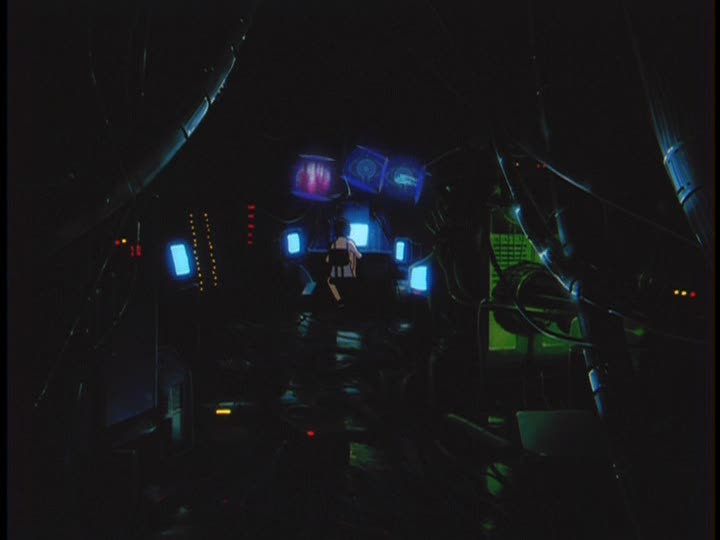-
Posts
2,478 -
Joined
-
Last visited
-
Days Won
219
Content Type
Profiles
Forums
Blogs
Everything posted by efaardvark
-
At any given time there's an extremely low probability of any damage from one. If they're big enough then they can certainly cause huge amounts of damage but the last really big one to hit the Earth was back in 1859 and was called the Carrington event. We've seen quite a few of these types of CME's thrown off by the sun that have missed the Earth so we know they exist and we've studied them enough to have quantified their properties so we know what they're capable of. Fortunately the bigger they are the less common they are and nothing that big has hit the Earth in modern times. We'd also have a bit of warning. Spacecraft like SOHO, ACE, and STEREO (and the upcoming SWFO) are designed for this. They're the ones that are currently (or will be, in the case of SWFO) feeding the data to the NOAA "space weather" site. Maybe we'd only get a few hours or a couple days notice, but that's enough time to shut down and disconnect important bits of infrastructure in an orderly manner. That said, in my own lifetime I remember in 1989 there was a big power outage in Canada caused by a large CME. It wasn't nearly as powerful as the Carrington event but it was still very disruptive to power and communications even back then. This was before things like the internet and smartphones and AWS. I can only imagine what it would be like today. We still haven't implemented a lot of the lessons learned from back then in today's infrastructure either. A physics textbook will tell you that changes in magnetic fields can effect changes in electric currents in wires, and vice versa. Things like motors in electric vehicles and generators in hydroelectric plants are possible because of this. In a motor or generator the wire carrying the electric current is all wound up in a compact coil, and the coil is shielded by the structure of the device, which generally only lets the electrical field interact with magnetic fields also within the device. But a straight wire is also subject to the same physics. If you have a long wire in a fluctuating magnetic field then the field can create an electrical current in the wire. The magnitude of the electrical current is directly related to the length of the wire and the rate of change in the magnetic field. There are many instances of very long wires exposed to the geomagnetic field in the modern world. A power transmission line or a phone line are a couple of examples. They are electrically insulated against things like short circuits but they're not shielded from magnetic fields and these wires are embedded in the earth's magnetic field along with everything else on earth. Normally this is not a cause for concern because the Earth's magnetic field is pretty stable. The Earth's magnetic field usually doesn't change much, or at least not quickly, so any effect from the geomagnetic field is normally manageable. That can change if a CME hits the Earth's magnetic field. The main cause of damage from CMEs is secondary effects from the huge, rapid fluctuations in the magnetic field caused by the charged particles when they hit the Earth's magnetosphere. This affects a large geographic area. When the magnetic field lines surrounding a power or communications cable that is hundreds or thousands of miles long start to change rapidly it can generate huge electrical currents in the cable. The ends of these cables will be connected to things like power plants, homes and offices, and communications centers. These currents would be far more than the equipment is designed to withstand and might go on for minutes or hours. In severe cases the induced currents can generate more power than the wires themselves can handle, in which case the wires will overheat, melting insulation and/or the metal wires themselves, and causing short circuits and fires. This last is what happened in 1859. Hundreds of miles of telegraph wires laid out between cities across the world channeled large electrical currents into the equipment at telegraph offices. Batteries overloaded and exploded, wires overheated, electrical arcs injured people and started fires, etc. Generally the damage was limited however. This was long before computers and even household electricity. Electric lightbulbs didn't even exist until the 1870s, and most homes weren't wired for electricity until the early 1900s. There just wasn't that much infrastructure around to be affected, electrically speaking. In today's high-tech world I think there is far more potential for damage, and the damage would be far more expensive and it would take much longer to repair or replace it all. If a Carrington-level CME hit the Earth these days it would immediately cause widespread power outages as circuit breakers tripped. Some circuit breakers would not be fast enough however, in which case the equipment power lines are connected to would be damaged and would have to be replaced before service could be resumed. Electrical arcs could damage or destroy nearby equipment as well. Things like datacenters would also be very vulnerable. They're connected to the power grid like everything else of course. They're also typically at the hub of a web of long-distance communications wires and the communication equipment is used to dealing with well-behaved low-voltage communications signals, not megawatts of unmanaged power coming down those wires at them. Satellites would also be affected. Communications systems that are used to dealing with faint data transmissions would likely be damaged or destroyed by induced electrical surges far beyond what they'd been designed for. Satellites in space would also be directly affected by the radiation of the CME. That radiation can penetrate to the computer chips and do things like scramble memory and disrupt the programs that are controlling the spacecraft. The other, and I think bigger problem with a Carrington-level CME event would be the sheer scale of the damage to the electrical, computing, and communications infrastructure. It's bad enough if one power plant or a particular datacenter goes down even temporarily. This would likely be a big event, geographically speaking. Bigger by far than something like an earthquake or a hurricane/typhoon. A large number of power plants, transmission lines, communications hubs, and data centers worldwide would be damaged and taken offline within minutes or hours of each other. A lot of the damaged or destroyed equipment would likely be very expensive and the inventory available for immediate replacement thereof would be limited. There are some high voltage, long distance power transmission transformers that would probably be vulnerable for instance but they're very expensive, they take months to build, and there's only a few dozen of them in use in the whole US. How big is the replacement inventory for that sort of thing? How many replacement GPS satellites could be quickly launched, especially if half the world's long distance power lines were down, along with the power plants and communications centers they'd been connected to? How long will it take to rebuild all the datacenters when most of the destroyed equipment will not be available from existing stock in warehouses and will have to be manufactured anew? Will the factories even be able to function to produce the replacement equipment? Some level of basic service could probably be restored relatively quickly, but rebuilding all of it could easily take months or even years. Some level of chaos would also be a quite likely outcome, and there's the question of if our bozo "leaders" in government would be able to effectively manage that chaos and the recovery efforts without creating even more problems.
-
That's a bit of a tricky question. Best guess is that the alignments will again start to become favorable(?) sometime next week. Maybe Wednesday/Thursday? TL;DR version.. This is all being driven by a huge sunspot, "AR3664". The sunspot itself is 15x as wide as Earth and it is positioned on the sun at a place that is periodically magnetically aligned with the Earth. The sunspot is very active and throwing off huge flares. Sometimes the flares detach and become giant coronal mass ejections (CMEs) that escape the sun. If one or more of these CMEs escape when it is at that perfect spot then the charged particles of the CME follow the magnetic field lines and hit the Earth. That's what causes these auroral displays, among other things. Of course the sunspots are on the surface, and the sun rotates. On average the sun spins on its axis once every 25 (Earth) days at the equator and once every 36 days at the poles. Additionally the sun's surface is not solid and moves around as the sun spins. The sunspots themselves drift around and come and go as well. The magnetic field lines that are associated with the sunspots flow out from the sun and get all twisted around by all these different motions, following the so-called "Parker Spiral" that was recently discovered by the Parker Solar Probe. That makes prediction of the trajectory of CMEs and their effect on Earth a bit like predicting Earth weather. I usually follow spaceweather.com for this sort of thing. Spaceweather had this to say: NOAA also has a very good site, especially if you're a science nerd.
-
Aaaand I didn’t. Between the latitude, the light pollution, and a bit of haze or fog I could barely even see any stars. Never mind any aurora. Anyone else have better luck?
-
I saw that! *3* X-class flares! One was a 5.8! Several smaller as well. Nothing Carrington level but there ought to be some good aurora displays not just tonight but all through the weekend and even into next week. The sunspot activity that has been causing them will have moved to the other side of the sun after that but there could even be a repeat when it comes back around. Unfortunately I'm in Southern California - and in a highly light-polluted urban area besides - so I'm unlikely to be able to see anything interesting. I told my brother in Wisconsin though. Last time he got some good pictures.
-
-
I just realized... I knew I'd seen Tinasha somewhere before. She's Yumiella a few hundred years later.
-
Not a big fan of the big warpipes or the bagpipes but I'm ok with the quieter smallpipes or the uilleanns. To me the bagpipes sound like they're trying to be brash and loud. They would go fine over with the brass. Uilleanns would be over with the flutes and clarinets.
-
I've only just finished ep2 so far but yeah, the pacing seems kinda Non Non Biyori-ish. (Not that that's a bad thing. I'll probably finish it.)
-
That's on my to-watch list as well.
-
When Johnny Comes Marching Home Again Or not.. Johnny I Hardly Knew Ye
-
Putting Tonari no Youkai-san on the watchlist.
-
Decided to give the first 3 episodes of Unnamed Memory a watch. Not quite done with all 3 yet but I can already tell this one will go on the end of season to-be-watched list.
-
Prowling the 'net looking for news on Take Two's layoffs, specifically as they relate to the closing of the Private Division office in Seattle, where Kerbal Space Program was being developed. Unfortunately it's not looking good for KSP2.
-
This was the old 60s version from before color was invented*. As a kid I watched TZ and Outer Limits all the time. The first season of OL was kinda cheezy but after that the writing, directing, and acting all got better, though mostly it was still unknowns on the writing and acting side. Even now it's fun to go back and see the works of some actors and writers (especially for Outer Limits) before they became big names. Captain Kirk before he became Captain Kirk for instance, or Harlan Ellison or Clifford Simak on the writing side. (* And yes, everything before the 70s was monochrome. Things like sunsets and rainbows were a lot less interesting back then. )
-
At the risk of dating myself, yes, I do remember “V”. Going even further back there was that Twilight Zone episode, “To Serve Man”. Spoiler, the episode title on that TZ episode is the name of a book the aliens gave us, which turns out to actually be a cookbook once it’s deciphered so.. yeah.
-
Maybe different aliens? Or maybe the same aliens! Maybe their civilization was so advanced that all their socks were made of plastic so they lost them in the Great Lid Catastrophy as well. I wonder if maybe they have a dryer research team at Area 51 as well?
-
Got a replacement spinny drive for my NAS drive that's going bad.. .. and a second M.2 SSD for my computer.. Guess I know what I'm doing this weekend.
-
I did a little googling.. that rabbit hole is deep. Apparently the Cassini probe that NASA sent to Saturn found plastics - perhaps tupperware - on Titan, one of the moons of Saturn. Since humans have not yet ventured that far except with robotic probes this may be evidence of occupation by the aliens, maybe as a base for dishwasher fabrication or perhaps as a relay station for the lids being sent back. We don't know for sure since the Cassini probe failed a few years ago (official cover story) and we haven't yet sent astronauts or another probe to follow up. But to answer your question, my guess would be probably the Grey, since insects and reptiles don't do well in cold temperatures.
-
Blast from the past... Has it really been over a decade?
-
Indeed. The truth is there's this planet out there with a very advanced civilization on it. They did something very stupid and embarrassing that among other things resulted in the near complete destruction of all the lids on the planet, as well as the ability to create more. Their plan to fix the situation was to manufacture dishwashing machines with teleporters in them and sell them to unsuspecting Earthings to steal all of our lids. NASA of course has known about this since we landed on the Moon. Yes, we did land on the moon but the government didn't want to create a panic about aliens stealing our lids so they manufactured that cover story about a severe flaw in the design of the Apollo rocket and the creation of the Hollywood movie set in Area 51 to fake the landings. The film production facility is of course a lie as well but it made a good cover story for the construction of a dishwasher research facility. They now have a number of alien dishwashers there and are studying them intently to try to duplicate the teleportation technology, so far without real success. To date they've only been able to transfer lids between "dishwashers" here on earth. Even that much can't be reliably duplicated. Occasionally the lid transported will disappear entirely, winding up who knows where, but sometimes the lid gets replaced in transit with a different lid entirely! Clearly we still have a lot to learn about this alien technology. ( Save this post as I expect it will be deleted soon. )
-
Feeling a little bit apprehensive. Got an email from my network storage saying the reidentification count (IDNF) on one of the drives therein is climbing. (Basically the drive is failing.) Not surprising since the warranty expired almost 2 years ago and you know how things tend to start breaking when the warranty expires, right? Because of that I'd already been thinking that maybe I should be shopping for replacements so went ahead and ordered a new drive but the timing kind of sucks. I had other plans for this weekend. I'd also been hoping to do a deeper dive on the current market before pulling out my wallet but I hadn't yet gotten a round tuit. (Though Blackblaze is always a good place to start.) Well, hopefully the old drive hangs in there and the new one gets here in time to install it Friday night and at least start the rebuild / reintegration process. Actually I'm not so worried about the drive failing per-se. It's in a RAID1 (mirror) configuration with another drive in the NAS so even if it fails completely the data is still safe on the other drive. One of the problems with multi-drive setups however - at least the cheap ones that I can afford - is that after you've replaced the failed drive then you have to read ALL the data on the other (good) drive(s) to rebuild the array and copy the data to the new drive. If your other drive is old (like mine) then every once in a while this brief period of intense use can stress that drive enough to fail as well. Not likely <knock knock> and I do have an offline backup but it would definitely mess up the weekend.
-
Apparently "Thermonator" is the trade name for the flamethrowing "dogs" in Fahrenheit 451. Available now for <$10k, free shipping included.
-
I'd go with the dinos as well. The Romans in particular were notorious for coming up with a number of nasty ways to kill people , often simply for entertainment. Definitely the train, if I have the time. Living at the bottom of the ocean or on the surface of Mars?
-
Yes, proper placement and intensity was often part of the art of the whack. Someone untutored in the art could shake a malfunctioning device, kick it, beat it up all day without "fixing" it. Finally in desperation one would have to call maintenance. The guy from maintenance would come up, take a look at the symptoms, maybe ask a few questions, then give it the right <thwack> in the right place and there you go, instant fix. Guess that's why he was paid the big bucks.
-
Good luck! There's a bunch of weird sh..tuff going on out there these days, economically speaking. I don't think anyone really knows how the next decade or so is going to play out but you could do worse than meeting it on your own terms.
Anime Forums
A unique community of fans from around the world, who gather to share their fandom and love of anime, manga, gaming, fanart and at the cornerstone of it all, Japanese culture!
Take a moment to join us today and you'll have access to our member clubs and events too. Come join in the fun and become a part of our community.













